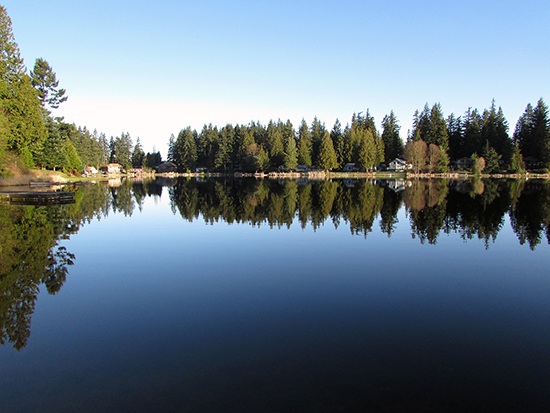|
Subscribe / Renew |
|
|
Contact Us |
|
| ► Subscribe to our Free Weekly Newsletter | |
| home | Welcome, sign in or click here to subscribe. | login |
Construction
| |
 |
March 28, 2022
Best in State: Gold Award
Future value to the engineering profession

Tetra Tech
Project: Lake Ketchum restoration
Client: Snohomish County Surface Water Management
Lake Ketchum, a beautiful 26-acre lake in northern Snohomish County just a few miles from Puget Sound, is home to about 60 residents and is also heavily used by the public for swimming, fishing, boating, and aesthetic enjoyment. The lake provides essential habitat for various fish, amphibians, birds and other wildlife.
As development increased in the Lake Ketchum watershed, its water quality markedly deteriorated until, eventually, it was the most polluted lake in Snohomish County and one of the worst in the state. Harmful algal blooms plagued Lake Ketchum, fueled by extremely high phosphorus levels in the water. Before restoration, phosphorus levels in Lake Ketchum were 13 times higher than regional standards and some of the highest in Washington state. At times, phosphorus concentrations in the lake’s bottom water (hypolimnion) were similar to those in raw sewage.
Through ongoing collaboration between Snohomish County and the Lake Ketchum community, with technical support from Tetra Tech, the lake water quality has been successfully restored.
The primary source of phosphorous runoff was a former dairy farm draining to the Lake Ketchum inlet stream. Release of phosphorus from lake sediments accounted for 73% of the total annual load to the lake, with the primary inlet stream making up 24%.
In 2010, Snohomish County initiated a project to develop a feasible restoration plan for Lake Ketchum. Tetra Tech was selected to design a lake study, conduct data analysis, develop a lake phosphorus model, and identify the best and most cost-effective restoration options. The county collected data during a one-year study of sources and amounts of phosphorus entering the lake. Modeling showed that conventional management options would not meet the project goals or were infeasible due to the high cost.
The innovative final restoration plan included a whole lake sediment alum treatment to inactivate phosphorus in the sediments, combined with a novel approach of using annual water column alum treatments to remove phosphorus entering the lake from external sources.
Using small, annual maintenance treatments each spring to inactivate the large amounts of external phosphorus pollution redefined the use of alum as a lake management tool. The conventional use of alum applications to lakes had been primarily to inactivate phosphorus in lake sediments, preventing internal loading to the lake. External water sources were controlled or treated in other ways.
While it may seem simple, Tetra Tech’s innovative solution to conduct small treatments across multiple years to address external loading was a first. Careful monitoring and data collection were essential to determine the project’s efficacy. Under the guidance of Tetra Tech, the county conducted monthly tracking of the physical, chemical, and biological changes in the lake and the lake inlet to assess the treatment impacts. Seven years after the initial treatment, including five years of small dose treatments, the project has proven to be highly successful at meeting and exceeding all project targets to reduce phosphorus levels, nearly eliminating potentially toxic blooms of algae.
The project monitoring by the county was instrumental in demonstrating this success to ensure other lake managers were aware of this innovative concept. The results have been shared multiple times during the past several years at local, state, and national lake management conferences and on the county’s website. In addition to advancing engineering thinking, the Lake Ketchum project has improved the public perception of engineered solutions to restore a natural waterbody. Despite the initial concerns, the community is delighted with the results and continues long-term financial support of the project. The lake flourishes with recreational activities, including fishing, boating and swimming.
Other Stories:
- National Finalist: Platinum award
Special Projects - National Finalist: Gold Award
Special Projects - National Finalist: Gold Award
Water Resources - National Finalist: Gold Award
Transportation - Best in State: Gold Award
Social, economic and sustainable design - Best in State: Gold Award
Complexity - Diversity and Inclusion Award: Mid-Size Firms
- Diversity and Inclusion Award: Large Firm
- Engineer of the Year
- Best in State: Gold Award
Social, economic and sustainable design - Best in State: Gold Award
Successful fulfillment of client/owner needs - Best in State: Gold Award
Future value to the engineering profession - Best in State: Gold Award
Unique or innovative application of new or existing techniques - Diversity and Inclusion Award: Mid-Size Firms
- National Finalist: Gold Award
Structural Systems


